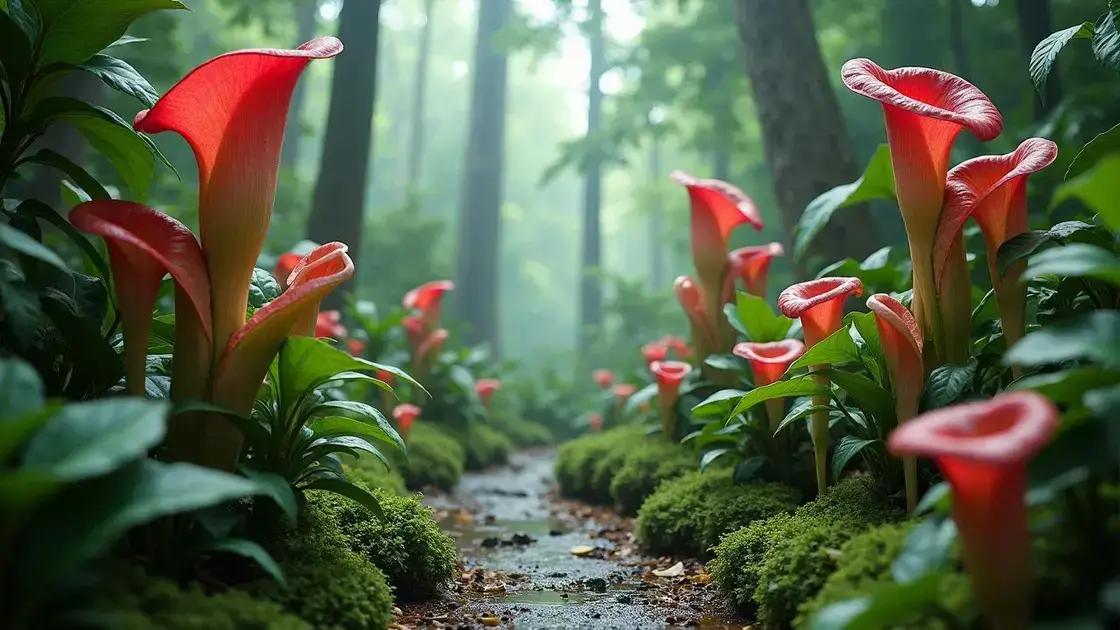How to Care for Pitcher Plant Indoors: 5 Essential Tips for Success
How to care for pitcher plant indoors is a question many indoor gardeners ponder. These unique plants, with their fascinating trapping mechanisms, require specific care to flourish in your home. From ensuring they receive enough humidity to understanding their light requirements, there are essential factors to keep in mind. Let’s delve deeper into creating the perfect environment for these captivating carnivores.
Table of Contents
ToggleUnderstanding the unique needs of pitcher plants
Understanding the unique needs of pitcher plants is essential for successful indoor care. These fascinating carnivorous plants have specific environmental and nutritional requirements that must be met to thrive in a home setting. In this section, we will explore the key aspects of pitcher plant care, focusing on their unique characteristics, light preferences, humidity levels, and watering needs.
Light requirements
Pitcer plants require bright, indirect light to grow optimally. Here are some tips for providing the right lighting:
- Place them near a sunny window where they can receive filtered sunlight.
- Avoid direct sunlight, which can scorch their leaves.
- If natural light is insufficient, consider using grow lights designed for indoor plants.
Humidity needs
Pitcer plants thrive in high humidity environments. Here are effective strategies for maintaining the right humidity levels:
- Use a humidifier in the room where your pitcher plants are located.
- Group plants together to create a microclimate with higher humidity.
- Place a tray filled with water and pebbles beneath the pots to increase moisture levels without waterlogging the roots.
Watering practices
Proper watering is crucial for pitcher plants. Consider the following:
- Use distilled water or rainwater to avoid chemical buildup.
- Keep the soil consistently moist but not soggy.
- Allow the top layer of soil to dry slightly between waterings.
Feeding pitcher plants
While these plants can catch insects for nourishment, providing additional feeding can enhance their health. Consider the following:
- Add diluted liquid fertilizer every 4-6 weeks during the growing season.
- Supplement with supplements formulated for carnivorous plants.
In summary, understanding and catering to the unique needs of pitcher plants is key to thriving indoor gardening. For more tips, consider exploring indoor gardening techniques that can further enhance the care of your plants.
How to create the ideal indoor environment

How to create the ideal indoor environment for your pitcher plants is crucial for their health and vitality. These unique plants thrive under specific conditions, making it essential for indoor gardeners to provide an optimal setting. This section will highlight important factors to consider, including temperature, lighting, and humidity, to make sure your pitcher plants flourish.
Maintaining temperature
The ideal temperature range for pitcher plants is between 70-85°F (21-29°C) during the day and 50-60°F (10-16°C) at night. Here’s how to monitor and manage temperature:
- Use a thermometer to keep track of indoor temperatures.
- Avoid placing plants near drafts, heaters, or air conditioning vents.
- Consider using a heating mat during colder months to maintain warmth.
Optimal lighting solutions
As previously mentioned, pitcher plants require bright, indirect light. To achieve this:
- Position plants near east or west-facing windows to capture morning or afternoon sunlight.
- Utilize artificial lighting options if natural light is inadequate; LED grow lights are a great choice.
- Monitor plant health to ensure they’re getting the right amount of light—yellowing leaves can indicate too much sunlight.
Humidity and moisture levels
High humidity is essential for pitcher plant health. Here are effective methods to maintain proper moisture:
- Invest in a hygrometer to measure humidity levels in your indoor space.
- Keep pitcher plants in a bathroom or kitchen where humidity tends to be higher.
- Consider creating a terrarium to trap humidity for your plants.
For detailed guidance on further enhancing your indoor plant care, check out exploring indoor gardening techniques that can provide additional practices for nurturing your plants.
Feeding and maintaining pitcher plants effectively
Feeding and maintaining pitcher plants effectively is vital for their growth and overall health. These captivating carnivores not only catch insects but may also need additional nourishment to thrive indoors. In this section, we will explore how to properly feed pitcher plants and provide tips for their maintenance.
Understanding the dietary needs
Pitcer plants are primarily insectivorous, but they can benefit from supplements when grown indoors. Here’s how to ensure they get adequate nutrition:
- Allow the plant to catch live insects whenever possible, such as flies or small bugs.
- If necessary, provide insect pieces like crickets or mealworms; be careful not to overfeed.
- Utilize a dilute liquid fertilizer every month during growing season for added nutrients.
Feeding schedule
Implementing a feeding schedule can help maintain optimal health. Consider the following:
- Feed live insects every 2-4 weeks during active growth periods (spring and summer).
- Fertilize with a suitable carnivorous plant fertilizer once a month.
- Reduce feeding during the winter months when growth slows.
Maintenance tips
To keep your pitcher plants healthy, consider the following maintenance practices:
- Regularly check for dead or dried-up leaves and remove them to encourage new growth.
- Monitor humidity levels, ensuring they remain high enough to support healthy plants.
- Repot every 1-2 years using a suitable soil mix, like a combination of sphagnum moss and perlite.
For further information and tips on indoor plant care, check out exploring indoor gardening techniques that can enhance your gardening experience.
In conclusion
Caring for pitcher plants indoors requires understanding their unique needs and providing the right environment, nutrition, and maintenance. By implementing the tips discussed, such as ensuring adequate light, humidity, and feeding, you can create a thriving setting for these fascinating carnivorous plants. Remember, each plant is unique, so pay attention to its specific requirements for the best results. For further inspiration and advice, check out tips on enhancing your indoor garden.

